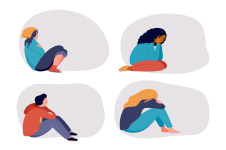People believe this because once someone learns something, it is tough to get them to learn something that competes with what they have learned about the subject. It is damaging to the ego to believe that they could have accepted something wrong, so they are willing to continue to think something wrong instead of buying new conflicting information. Also, people don’t like to take responsibility for their culpability in issues. Both of these will become relevant below.
When it comes to gender non-conformity, two main factors come into play: the non-conformity itself and the effect (generally negative) that it has on one’s life. Until about a decade ago, medical experts didn’t distinguish between the two; they assumed that if you have the former, you have the latter. So, they considered the whole to be something called gender identity disorder (GID) and labelled it a mental illness.

Recently, experts have noticed that patients, especially those allowed to go through treatment, still have gender non-conformity, but it no longer hurts their lives. This is a significant distinction because to qualify as a mental illness, something must affect your thinking, mood, or behavior and negatively affect your quality of life or ability to function in society. As a result, they have had to re-examine their approach to the issue and their definition of mental illness. So, they eliminated GID from the manuals and created a new mental illness known as Gender Dysphoria. Gender dysphoria is defined as depression that often accompanies gender non-conformity and can be the result of gender dimorphism and social pressures. This is a massive distinction because it means that the medical profession acknowledges that the issue of mental health in these cases often relates to how the patient was being treated by others and not how the patient was acting, which is much more challenging to treat.

Professionals say that patients that were allowed to transition and had suitable support structures had terrific results and were generally wholly cured of their dysphoria, even though they’re still transgender. While patients who lacked support structures would often persist in dysphoria, and some would even desist in transition, though it is worth noting that studies have shown that less than 5% of disasters did so because they weren’t transgender, the vast majority of them did so because they were pressured into it by family/friends/coworkers, and many later resumed treatment.

